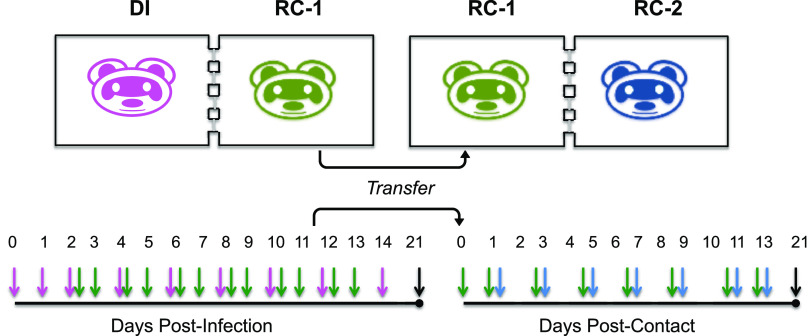FIG 1.
Experimental design for two sequential rounds of respiratory transmission. Six ferrets were directly inoculated (DI) with 1 × 106 TCID50 of virus in a 1-mL inoculum delivered intranasally under 5% isoflurane anesthesia. Twenty-four hours later, each DI ferret was introduced into a transmission cage with a naive respiratory contact ferret (RC1). Nasal wash samples were collected daily from the RC1 ferrets and were assayed for viral antigen by test strip (FluDETECT, Zoetis) or viral RNA (M gene, quantitative reverse-transcriptase PCR [qRT-PCR], CT < 35). Once the RC1 ferret was positive by either test, this animal was moved to a new transmission cage and housed with a second naive respiratory contact (RC2). Nasal wash samples were collected from these animals on day 1 postcontact and every other day for 14 days. On day 21 postinfection for the DI ferrets and day 21 postcontact for RC1 and RC2 ferrets, terminal blood draws were performed, and the sera were assayed for antibodies via hemagglutination inhibition assay (HI) and microneutralization assay (MN). At the completion of the study, all nasal wash samples were titrated on MDCK cells. Magenta, green, and blue arrows denote the days nasal wash samples were collected from the DI, RC1, and RC2 ferrets, respectively. Black arrows denote days of terminal blood collection.

